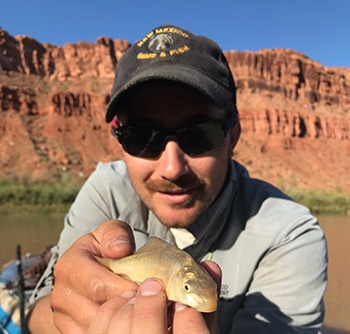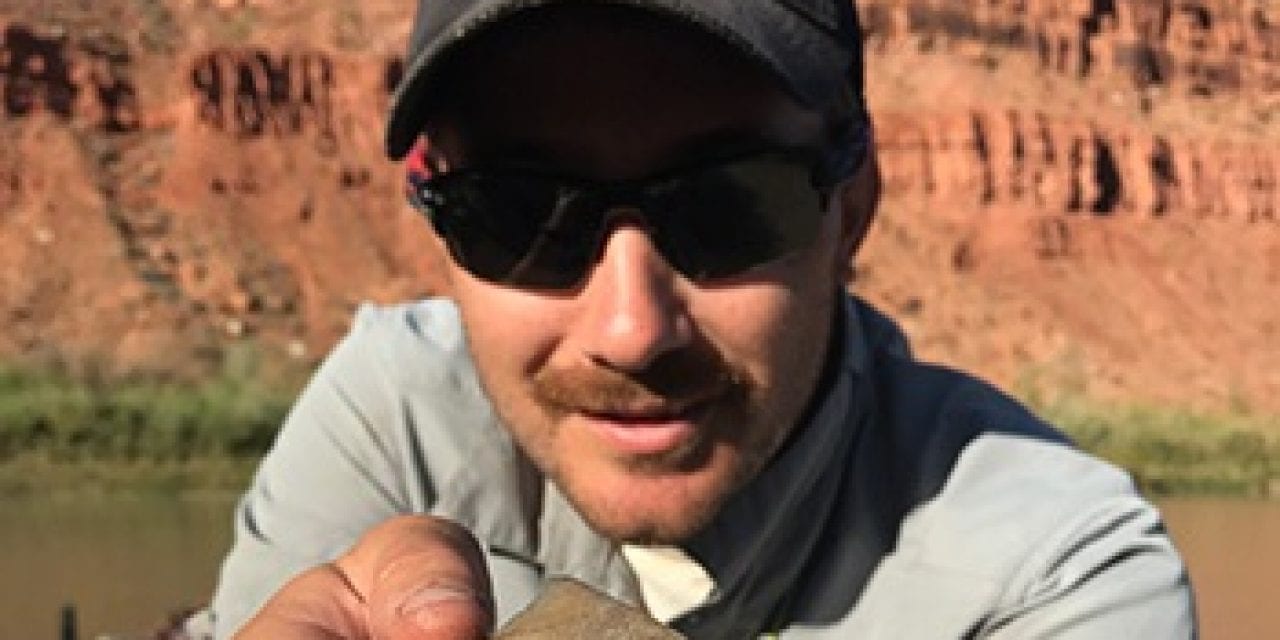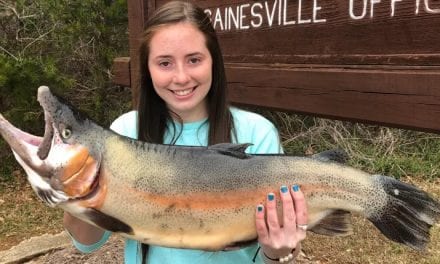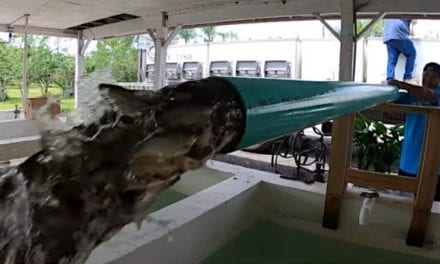 Fishery surveys conducted by San Juan River Basin Recovery Implementation Program have revealed surprising—and quite welcome—information about an endangered fish. The number of yearling razorback sucker discovered by biologists who examined fish populations in the San Juan River in northwest New Mexico during the fall of 2018 reached an all-time high.
Fishery surveys conducted by San Juan River Basin Recovery Implementation Program have revealed surprising—and quite welcome—information about an endangered fish. The number of yearling razorback sucker discovered by biologists who examined fish populations in the San Juan River in northwest New Mexico during the fall of 2018 reached an all-time high.
Biologists captured 50 yearling razorbacks—the greatest number found since surveys began more than 20 years ago. The number suggests that yearling fish could number in the thousands through the approximate 180-mile study reach. Moreover, this year marks only the second time in that same period that yearling razorbacks (at left, New Mexico Department of Game and Fish biologist Matt Zeigler with a yearling razorback sucker. Photo by USFWS) were captured in the fall.
“It was amazing to see these little fish in the river,” said U.S. Fish and Wildlife Service biologist Nate Franssen. “We have been stocking razorbacks and managing the river for many years hoping to see these signs of recovery. It’s a ‘Field of Dreams’ moment: Build the habitats and they will come.”
Large amounts of water, more than 8,000 cubic feet per second purposely released a week at a time from Navajo Reservoir by the Bureau of Reclamation in the spring of 2016 and 2017, created fish habitat. The high flows scoured the channel and created slow-flowing, warm backwaters needed by young fish. The amount of these nursery backwaters was at its highest level this year, dating to the mid-1990s.
What’s more, Navajo Nation biologists moved nearly 300 adult razorbacks over a migration barrier, while researchers led by the Bureau of Reclamation moved hundreds of adults upstream of a waterfall at the bottom end of the river near Lake Powell. Razorbacks migrate upstream in the spring to spawning habitats.
“This is likely the first time in decades that the San Juan River has supported these fish through their most vulnerable period in their life: from egg to hatching to a fall yearling,” said Franssen.
The razorback sucker (at left, by Mark Fuller/USFWS) was determined in 1991 to be endangered with extinction under the Endangered Species Act. This fish lives only in the Colorado River and its large tributary streams. Its body form—a prominent keel on its nape speaks to habitat. The fish is at home in swift water formerly typified by free-flowing rivers. Razorbacks live in eight rivers in the Colorado River basin and only those in Lake Mead, Nevada, show consistent wild reproduction and yearling survival, punctuating the importance of the recent San Juan River findings.
The San Juan River Basin Recovery Implementation Program is a collaborative endangered species program run by the U.S. Fish and Wildlife Service, Bureau of Reclamation, Bureau of Land Management, Bureau of Indian Affairs, states of New Mexico and Colorado, Navajo Nation, Jicarilla Apache Nation, Ute Mountain Ute Indian Tribe, Southern Ute Indian Tribe, water users from the basin and organizations such as The Nature Conservancy. The Service’s Southwestern Native Aquatic Resources and Recovery Center in New Mexico, and Ouray National Fish Hatchery in Utah, stock razorback sucker.
To learn more about the razorback sucker and other fishes of the Colorado River, visit www.fws.gov/southwest/sjrip/ .
The post Endangered Razorback Sucker Numbers on the Upswing appeared first on .
















